Art In London
We have another guest blogger this week. One of our teachers Lavinia.
This weekend was one of culture for me. Despite loving art, I often find myself not setting foot in an art gallery for ages and then all of a sudden I seem to see lots of exhibitions over a short period of time. This weekend was one of those times. Both Tate Britain and Tate Modern are open to 10pm on Friday and Saturday nights, which is great as it means that on Fridays you can go after work or school.
Pre-Raphaelites, Victorian Avant-Garde - Tate Britain
(Nearest tube station: Pimlico, Victoria line)
Friday night I went to see the exhibition “Pre-Raphaelites, Victorian Avant-Garde”. The Pre-Raphaelites were a group of artists who wanted to change the artistic conventions of their time. This British movement coincided with the reign of Queen Victoria (1837-1901) and the industrial revolution: a frenetic period of change in the United Kingdom. This change encouraged the group to experiment with new forms. They disliked the decadence of the art produced at that time and returned to earlier art from the period before Raphael (1483-1520) for their inspiration, hence the name “Pre-Raphaelites”. They paid a lot of attention to depicting images of nature accurately, they used rich colours and the central figures often appeared rather flat in terms of perspective. The themes they explored were often medieval and literary. Within the movement was an inner circle called the “Pre-Raphaelite Brotherhood” (PRB), of which the founding members were John Everett Millais, Dante Gabriel Rossetti and William Holman Hunt. This brotherhood was established in 1848 and at first they were quite secretive, placing the initials “PRB” in their work but not explaining what they meant. I, as do many people the world over, love the Pre-Raphaelites as not only are their paintings, drawings and sculptures beautiful and, at times, mesmerizing, but their work also interestingly combined new and historical approaches to art.
The exhibition itself is divided into 7 rooms, each one having a different theme. These range from the origins of the movement and their manifesto to nature, paradise and mythologies. The exhibition is really easy to follow and you can really begin to recognize the individual styles of the different artists. I particularly liked the paintings by Edward Burne-Jones, but I recommend that you go and decide for yourself! There are also lots of nice things to buy in the shop afterwards so take your credit card with you!
For more details, visit: http://www.tate.org.uk/whats-on/tate-britain/exhibition/pre-raphaelites-victorian-avant-garde
Edvard Munch: The Modern Eye – Tate Modern
(Nearest tube stations: Blackfriars, District & Circle lines and Southwark, Jubilee line)
Saturday afternoon I paid a visit to Tate Modern to see the Edvard Munch exhibition, which was an entirely different kettle of fish although equally enjoyable. Munch (1863-1944) was born in Norway. He had a gloomy childhood during which he saw both his mother and sister die of tuberculosis. This unhappy time had a lasting impact on him, leading to much of his work being subjective, and often emotional, interpretations of the world around him. Munch was fascinated by themes such as aging, sickness and emotional confusion but his work also offers an insight into the political and social changes taking place at the time. The majority of Munch’s work was oil on canvas but he also experimented with photography, some pieces of which are really interesting as he often moved the camera, blurring the figures and giving a slightly supernatural feel to the work.
In comparison to the Pre-Raphaelite exhibition, Munch‘s work at Tate Modern has been categorized not only according to themes, but also to the different mediums he employed. The exhibition consists of 12 rooms, so is quite large. However, because all the work is by one artist, you tend to move through the rooms quite quickly. Many of my friends said that they thought the exhibition was a bit “bleak” or depressing. I disagree, I don’t know whether it was because I saw it in the middle of the day when the sun was shining, but I certainly didn’t come away feeling downhearted. Rather I felt uplifted because I had gained a real understanding of one of the world’s prominent modern artists.
Again, a visit is definitely worth your while.
For more details, visit: http://www.tate.org.uk/whats-on/tate-modern/exhibition/edvard-munch-modern-eye
Each exhibition costs around £15 but you may find that if you show your student card, you might get a discount.
If you do go, I’d love to know what you think!
By Lavinia
Glossary
to set foot in (a building) (phr.) – to enter (a building)
for ages (adv. phr.) – for a long time
frenetic (adj.) – fast, intense, slightly chaotic
decadence (n.)– immorality, low standards of behavior
hence (adv.)– “which explains”
to depict (v.)– to show
within (prep.)– inside
secretive (adj) – not telling people information that they want to know
the world over (adv. phr.) – all over the world
mesmerizing (adj.)– hypnotic
a manifesto (n.)– a statement about a movement’s philosophy
to recognize sth.(v.) – to identify sth.
a different kettle of fish (idm.)– to be completely different
gloomy (adj)– depressing, miserable
lasting (adj.) – long-term
Post your questions and comments:
Why study at The London School of English?
- Rated “Excellent” in over 450 independent client reviews
Over 100 years’ experience
Tailored training delivers clear results
Memorable experiences in London, Canterbury or online









